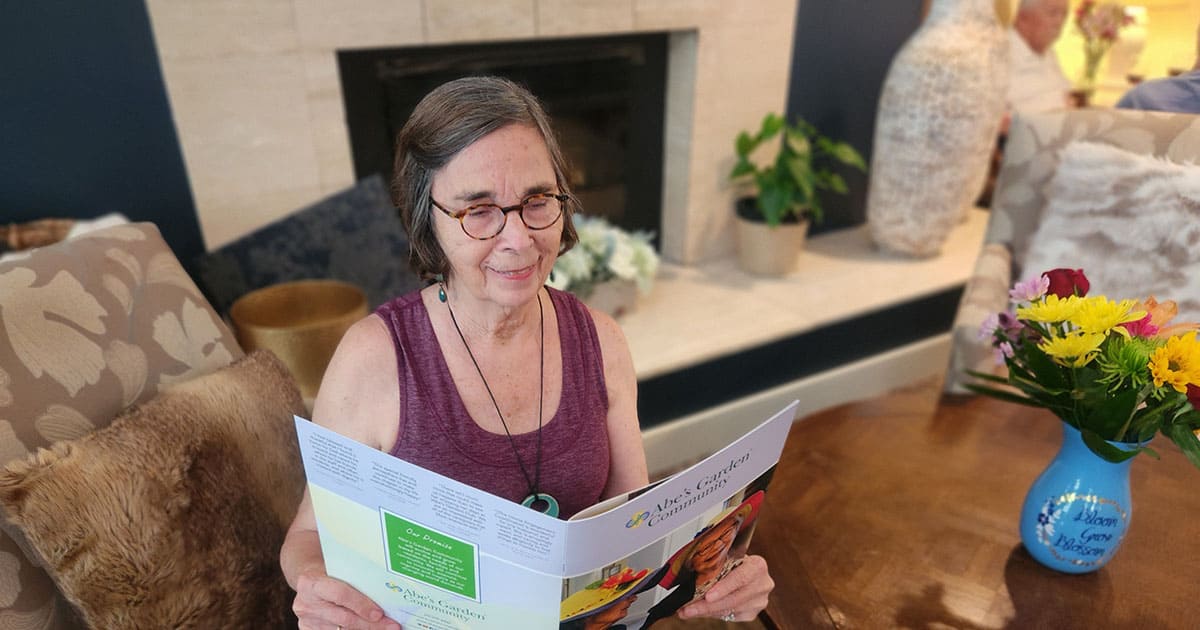As we age, one of the most significant decisions we face is where to live. Many of us wonder whether it’s better to move to a senior living community or to continue maintaining our current home.
This decision is not just about comfort, social engagement, or health considerations but also financial implications. In this blog, our Abe’s Garden Community team explores the costs of each lifestyle choice to help you make a more informed financial decision.
The cost of senior living communities
Senior living communities come in various forms, including independent living, assisted living, and continuing care communities. Costs vary based on location, levels of care, floor plan, and amenities.
Let’s get a closer look at what costs you can expect in senior living:
#1: Monthly fees
Senior living communities typically charge a monthly fee that covers a range of amenities, like meals, transportation, housekeeping, and social activities. Some communities also include healthcare services in their monthly rates, while others may offer it for an additional fee.
#2: Entrance fees
Many communities require an upfront entrance fee, which can be substantial. This fee may be refundable to some degree, depending on how long you stay in the community and the terms of the contract.
#3: Care costs
The costs will likely increase if the community provides healthcare services or the resident needs to transition to a higher level of care, such as assisted living or memory care.
#4: Predictability
One of the most significant financial benefits of a senior living community is that the monthly costs are typically predictable, which can aid in the long-term financial planning process.
Download our free guide: “Staying Home vs. Senior Living – Should you stay or should you go?”
The cost of maintaining a home
Homeownership in senior years comes with its unique set of expenses and considerations.
Let’s get a closer look at what costs you can expect in home ownership:
#1: Mortgage payments
For seniors who have yet to pay off their mortgage, monthly payments will continue to be a significant expense.
#2: Utilities and upkeep
Unlike in a senior living community, homeowners are responsible for all utility costs and home maintenance. Maintenance costs may increase as homes age, and unexpected repairs can be financially burdensome.
#3: Property taxes and insurance
As a homeowner, one must also account for property taxes and homeowner’s insurance, both of which can be subject to increases.
#4: Healthcare services
If additional health care is required, homeowners will need to factor in the cost of in-home care providers, which can quickly become substantial if round-the-clock care is needed.
#5: Home modifications
Home modifications may be necessary to ensure a safe living environment (such as installing wheelchair ramps, grab bars, stairlifts, etc.), and these renovations come with their own set of costs.
#6: Lack of predictability
Homeownership expenses can be somewhat unpredictable, particularly with fluctuating costs like repairs, renovations, and healthcare needs.
#7: Financial assistance and tax considerations
It’s important to note that financial assistance, such as Medicaid, long-term care insurance, or Veterans’ benefits, may help offset the costs of either option. Additionally, tax deductions may be available for seniors, depending on their living situation and healthcare expenses.
Get 5 tips for paying for a move to a senior living community >>
Weighing the costs and benefits
The decision between moving to a senior living community and maintaining a home is complex and highly personal. Financially speaking, senior living communities offer more predictable costs. At the same time, homeownership provides the potential benefit of property appreciation and could be less expensive in the long run if healthcare needs are minimal. However, homeownership also carries the risk of unforeseen expenses.
Before deciding, it’s crucial to analyze your financial situation, consider potential changes in health and care needs, and seek advice from a financial planner who specializes in eldercare issues. By doing so, you’ll be better equipped to make a choice that aligns with both your financial reality and your personal preferences for your senior years.
Are you ready to explore senior living further?
Download our free guide: “Staying Home vs. Senior Living – Should you stay or should you go?” to help you decide between aging in place at home or moving to senior living. You’ll get the facts about the senior living care options and discover what to expect. Additionally, the guide provides tips on assessing your home’s safety and weighing senior living cost versus value.




